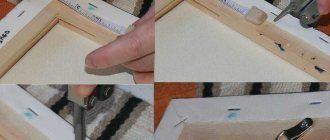If you find an old manual meat grinder lying idle in your house, because you bought an electric equivalent or a food processor a long time ago, then you should not rush to throw away the find. A vintage item can still come in handy, becoming an excellent piece of furniture or a practical multifunctional accessory. A meat grinder can become a donor for making a vice or a potato masher, which is indispensable on the farm. So, let's find out what useful homemade products you can make from an old aluminum or steel meat grinder.
Flower pots
The principle of making an unusual vintage flower pot is quite simple. It is enough to screw the meat grinder to the window sill in the standard way, tighten the fastener firmly, fill the body with earth without dismantling the mesh and the screwing element on the front panel, and your extraordinary planter is ready! If you don’t like indoor fresh flowers, then an impromptu flower pot can be filled with artificial plants.
The popular bookmaker has released a mobile application for Android, you can follow the link absolutely free.
You might be interested in:
Meat grinder with metal gears - Meat grinder with metal gears, features and review of popular models
How to assemble a meat grinder correctly? — Description of the assembly and disassembly processes of manual and electric meat grinders
Sharpening knives for a meat grinder - Listing of funds and a brief description of methods for sharpening knives for a meat grinder
Belarusian meat grinders - Review of popular models of Belarusian meat grinders
Page tags: Design and principle of operation of a meat grinder
Large and small vices for the home workshop
Any old-style meat grinder has a mounting clamp, so creating a vice for home use is not difficult. You need to carefully trim the lower part of the body and sharpen the cut area with a small file. A convenient and compact clamp will be an excellent tool for the workshop when making small workpieces. If you need to make a small vice, then you will have to weld metal jaws with notches to the top and bottom of the fastening element. It is worth noting that cast iron meat grinders are much easier to weld than their steel and aluminum counterparts.
How to make it yourself
To assemble the electrical unit, we take a manual meat grinder without a rotation handle. If for some reason such a unit is not available, do not worry - it is inexpensive, and there are quite living specimens at market stalls.
To connect the electric drive, we fix the main components on a plywood base. It has only one big disadvantage - fear of moisture. Therefore, it is advisable to treat the wood with a protective varnish or drying oil.
Use a marker to mark the places where the meat grinder is attached to the board. Then we drill through holes through the base. Secure with bolts, nuts and wide-field washers. We try not to overtighten.
The commutator motor must have a reduction gearbox. The gears are metal, as the load during operation is high. Next, we put a small pulley on the gearbox shaft. We secure it with a bolt instead of a key.
It is necessary to make a larger pulley onto the meat grinder shaft and attach it with a screw. To prevent the pulley from rotating on the bolt, we modify the seat with a file. We get a driven pulley.
If the belt is toothed, then the pulleys also need notches for better grip, or gears for the belt.
Temporarily connect both pulleys with a belt with the belt tension, put marks for attaching the electric motor. It is more convenient to mount it on a motor mount, since the load will be high.
It is important to ensure correct belt tension thanks to the longitudinal holes in the motor mount. Too much tension will lead to premature belt failure.
If the tension is weak, nothing will work.
The mechanical part of the equipment is assembled, let's move on to the electrical part.
For successful operation, energy must be supplied to the electric motor. For ease of use, we will mount a switch and a power connector.
We solder the circuit through the switch. We select the polarity so that the engine rotates in the desired direction. We glue the connector and switch to the base of the platform with hot glue.
Please note that the power supply is compatible with the electric drive. As a rule, the motor has a wide range of power supply voltage - from 7 to 24 volts
The golden mean would be a voltage supply of 12 or 16 volts.
We serve food and the meat grinder starts working. The cost of a homemade device will be slightly lower than its budget Chinese counterparts, and the strength is sufficient for processing any meat. However, she lacks reverse and will have to put up with it.
It is also worth paying attention to the safety of working with a wide feed throat. It is good for manual processing of meat, but unsafe for electrical configuration
Atmospheric lamp
The original lighting fixture will fit perfectly into the interior of a house made in vintage, retro, classic, or USSR style. Such a lamp will not go unnoticed by guests. The peculiarity of the illuminator lies in the flexibility of mounting the light bulb, which can be mounted in the body of the meat grinder or in the base of the fastening element of the product.
What can be made from the remaining pieces of linoleum, interesting ideas and options
Holders and hooks
If your bathroom doesn't have a toilet paper holder, then it's time to make one from an old meat grinder. To do this, the required handle is installed in the body instead of meat grinder spare parts. After which the structure is fixed on the wall.
What can be done from old towels and practical ideas for saving
An excellent option would be to create a panel with towel hooks from the handles of old meat grinders. True, you will need several of these products.
Using internal components
Not only the body can be used in everyday life. The internal and external components that are in the meat grinder can also be used in the household or decoration.
Lattice
The grid is suitable for making potato masher . The grate must be thoroughly sanded with sandpaper. A pin is inserted into the central hole, serving as a handle, and secured with bolts. It is recommended to equip the upper part with a silicone insert for more comfortable use and safe contact with the skin.
Pen
Handles from an old meat grinder can be used to create coat hooks . This product looks very original and creative.
Pincushion, stand, decorative elements
An old kitchen appliance can be used to store office supplies by attaching it to your desk. And needlewomen skillfully use meat grinders to place needles; just fill the body with foam rubber, washcloths and cover it with a piece of beautiful fabric. In addition, you can create beautiful installations in the style of the USSR using the body or parts of a meat grinder. Such interior solutions will become a real decoration of the house, sometimes practical.
conclusions
The more accurate the parts, the less the runout, the longer the machine lasts and the better the quality of the cut. Hence the conclusion - do not rush, maintain all dimensions with maximum accuracy.
What can be done for everyday use from a broken electric meat grinder?
To decorate the interior or make practical things for the home, you can use not only old Soviet meat grinders, but also their electrical analogues that have become faulty. A disassembled electric meat grinder can become a donor for the creation of other household and household appliances; a serviceable engine will be a particularly valuable element.
For example, you can make a room fan. To do this, you need to attach blades and fasteners to the power unit. There is no need to spend money on a new device; it is worth disassembling an old electric meat grinder to create an indispensable assistant in the heat.
Another device that can be made from an electric meat grinder is a grinder, which should be in every man’s tool arsenal. You can also assemble a miniature abrasive machine using a meat grinder engine and other elements. The main thing is to follow the clear instructions so that the device functions normally.
As you can see, old things can take on new life. From a meat grinder from the times of the USSR, you can make simple and necessary household items or interior items that may not be appropriate in a house or apartment, but will fit harmoniously into a country house.
Simple homemade grinding machine
Homemade grinding machine from an electric meat grinder engine, photo and description of production.
I was cleaning out the pantry and discovered a Soviet-era electric meat grinder. I took it apart and found out that the gearbox was badly worn, but the electric motor was in excellent condition.
The electric motor is single-phase, asynchronous, here are its operating parameters:
- Supply voltage - 220 V.
- Rated power - 60 W.
- Rotation speed - 2,750 rpm.
Without hesitation, I decided to make a small grinding machine out of it.
In the store I bought a grinding attachment, which is a plastic disc with a soft polyurethane pad, onto which Velcro with a diameter of 125 mm is glued.
The attachment has an M14 thread for screwing onto the output shaft of the angle grinder. I also purchased circles made of waterproof abrasive paper for Velcro, P120 grit.
To install the grinding attachment on the motor shaft, it is necessary to make an adapter. You can, of course, measure the required dimensions and go with a drawing to a familiar turner, but we are not looking for easy ways. Let's make an adapter from the drive gear of a meat grinder. We install the gear on the electric motor shaft and secure the electric motor to some kind of base (you can use clamps to a table). Armed with a flat metal file, we begin processing: turn on the electric motor and, without much effort, grind our gear to the desired diameter. We fix the finished adapter on the nozzle with epoxy glue (what was on hand).
The base of the machine was made of 30 mm thick chipboard. To secure the electric motor to the base, I made a couple of parts from scrap materials (in this case, metal corners from a hardware store).
I connected a capacitor and a switch to the electric motor, well, basically, I got a homemade grinding machine with my own hands from scrap materials.
Source











